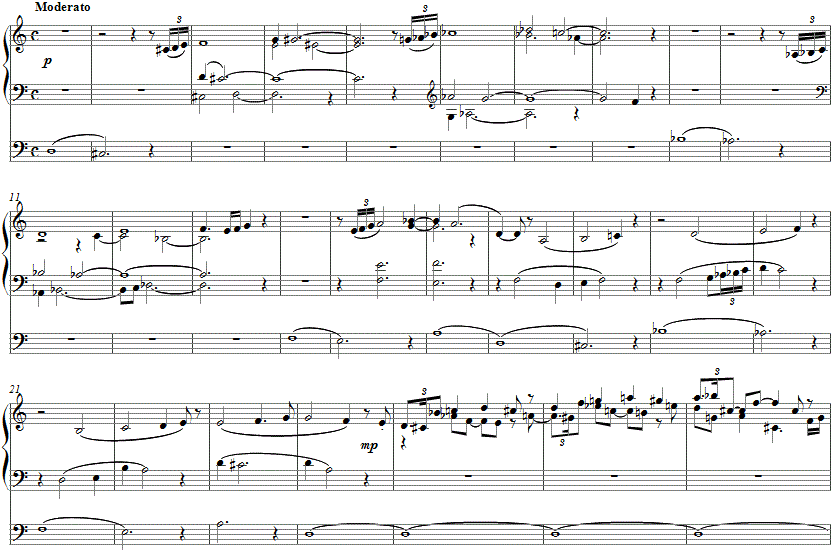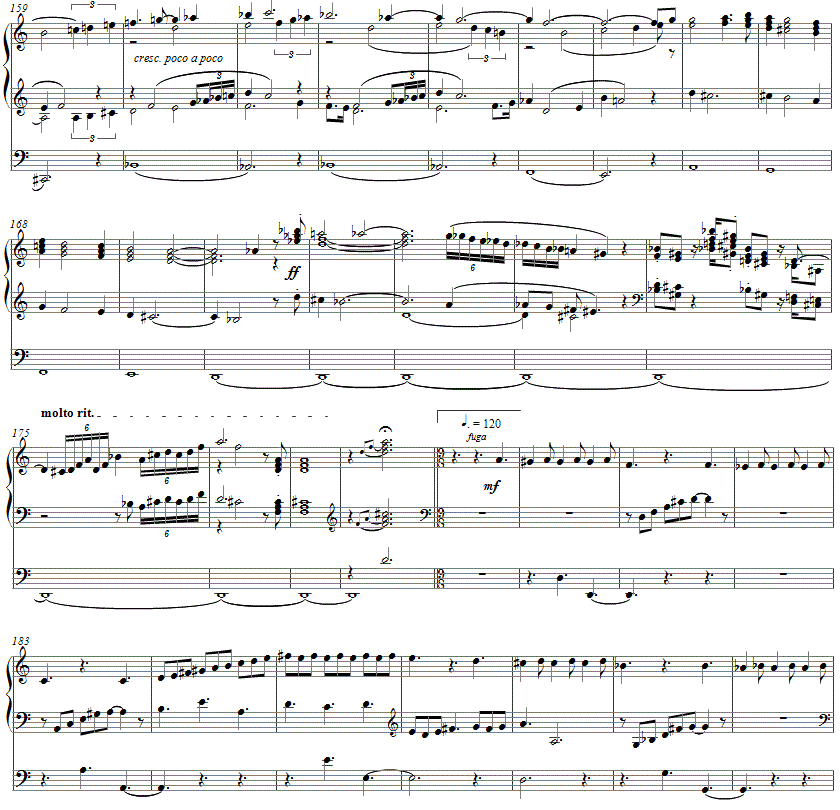Music and Texts of GARY BACHLUND
Vocal Music | Piano | Organ | Chamber Music | Orchestral | Articles and Commentary | Poems and Stories | Miscellany | FAQs
Variations and Fugue on a Theme of Webern - (2012)
for organ
for Wayne Marshall
Earlier in this season, we attended a fine concert by the Staatskapelle Berlin conducted by Daniel Barenboim, with the Webern opus 1 Passacaglia for Orchestra as the first piece on the program. Its delights stayed with me throughout the remainder of the concert as I mused over the theme of the piece, even competing with the other works which followed. That theme stuck with me, and for this some months later I thought to base a work for organ on it. The initial statement of the passacaglia as Webern announced it is not stated openly until several variations have gone past. Extended phrases separate the theme's elements into two note entries. The harmonic implications of the theme become evident when so widely spaced in time.
Anton Webern in 1912
The theme moves from D to D, with the interesting color of A flat implying additional regions with then take part in the "structural function" of the basic D minor. (Structural, as in Schoenberg's Structural Functions of Harmony.) The function of straying away from the tonic minor in this way opens the possibilities for other regions and harmonies, as may be seen in the second arch, measures 5-7. The seven-tone theme clearly draws this straying back into the tonic at each venture. At measure 25 and beyond, a quixotic gesture in the manuals repeats the theme in diminution as well as transposition as a precursor to the fugue which follows the variations. A registration is suggested, employing a big-voiced 16' for the first statement in the pedal, without octave registration above it.
A stentorian coda to the variations includes the two chords which couple the seven notes of the theme to the underlying A, acting functionally as dominant root for the gesture which finds itself as a fulcrum device in the fugue as well. (The G-sharp is only an enharmonic of the now often-heard A flat for ease of reading.) The fugue subject begins on A, which seems the dominant of the theme, but it is now structured as a reinforcement of the tonic minor. Succeeding statement of the fugue subject move throughout many tonal regions, following the broader implications of the original theme. A thunderous close in full organ comes as the tri-chords sing out over the pedal line which again restates the original theme before a solid cadence in the tonic minor.
Andreas Sieling, Marilyn Barnett and Wayne Marshall
at the Berliner Dom
While Wayne Marshall was here to conduct Bernstein's Candide for the Staatsoper, he expressed to my wife an interest in seeing and hearing some of the fine organs in Berlin. I arranged us to attend a mass at St. Hedwig's and see its instruments, and thereafter to meet Andreas Sieling, organist of the Berliner Dom. Expecting only to see the instrument, Professor Sieling was kind enough to allow Wayne to play for some time there while I took some photos and enjoyed the improvisation. The juxtaposition of that occasion and the concert performance of Webern's Passacaglia joined hands to become this piece a year later.
The entire work is here,
, an MP3 file [ circa 11' 00" ]
The score is available as a free PDF download, though any major commercial performance or recording of the work is prohibited without prior arrangement with the composer. Click on the graphic below for this organ score.
Variations and Fugue on a Theme of Webern


